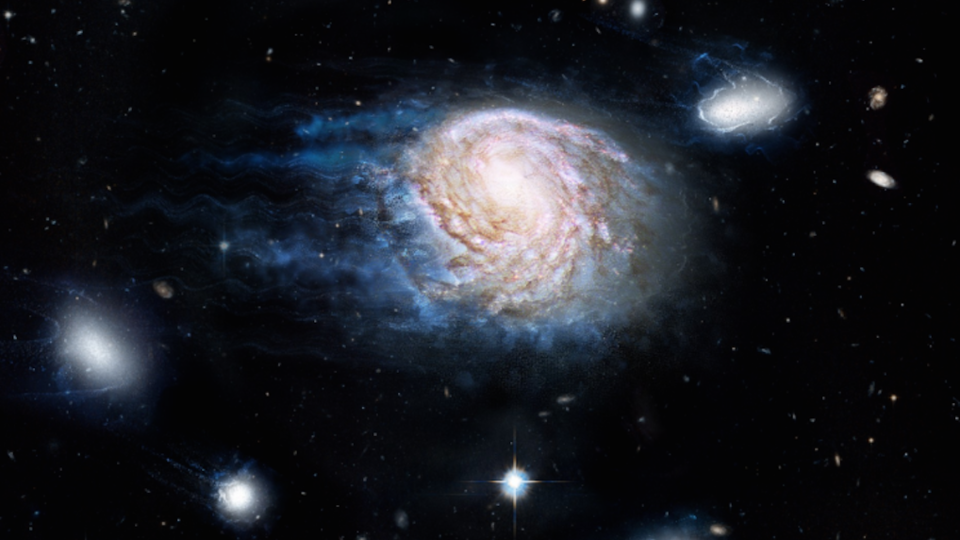Universe Update
A Galactic Whodunnit

“You can think of it like a giant cosmic broom that comes through and physically sweeps the gas from the galaxies.” Toby Brown of the International Centre for Radio Astronomy Research is talking about the suspect behind many galactic killings. Not a cosmic broom, but, according to research published today in the Monthly Notices of the Royal Astronomical Society, a phenomenon called ram-pressure stripping.
Brown and his colleagues studied 11,000 galaxies and found their gas—the lifeblood for star formation—is being violently stripped away on a widespread scale throughout the local Universe. (A conceptual animation of the process is available here.) “We’ve found this removal of gas by stripping is potentially the dominant way galaxies are quenched by their surrounds, meaning their gas is removed and star formation shuts down.”
Astronomers believe that galaxies are embedded in clouds of dark matter called dark matter halos. Dark matter is the invisible, mysterious material that accounts for roughly 27 percent of our universe, and dark matter halos extend far beyond the visible galaxy, providing most of a galaxy’s mass. And a galaxy’s halo can change. “During their lifetimes, galaxies can inhabit halos of different sizes, ranging from masses typical of our own Milky Way to halos thousands of times more massive,” Brown says.
It’s the change in halos where galaxies face this stripping. “As galaxies fall through these larger halos, the superheated intergalactic plasma between them removes their gas in a fast-acting process called ram-pressure stripping,” Brown explains.
And without the gas, the galaxy loses the ability to make new stars. “It dictates the life of the galaxy because the existing stars will cool off and grow old,” he says. “If you remove the fuel for star formation then you effectively kill the galaxy and turn it into a dead object.”
To determine the cause and culprit of these galaxy deaths, the team used an innovative technique combining the largest optical galaxy survey ever completed—the Sloan Digital Sky Survey—with the largest set of radio observations for atomic gas in galaxies—the Arecibo Legacy Fast ALFA survey.
ICRAR researcher Barbara Catinella, co-author of the study, says astronomers already knew ram-pressure stripping affected galaxies in clusters, which are the most massive halos found in the Universe. “This paper demonstrates that the same process is operating in much smaller groups of just a few galaxies together with much less dark matter,” says Brown. “Most galaxies in the Universe live in these groups of between two and a hundred galaxies.”
Ram-pressure stripping isn’t the only perpetrator of galaxy death in the Universe. The other is strangulation, Brown says. “Strangulation occurs when the gas is consumed to make stars faster than it’s being replenished, so the galaxy starves to death. It’s a slow-acting process. On the contrary, what ram-pressure stripping does is bop the galaxy on the head and remove its gas very quickly—of the order of tens of millions of years—and astronomically speaking that’s very fast.”
Image: ICRAR, NASA, ESA, the Hubble Heritage Team (STScI/AURA)